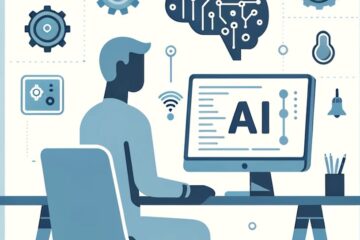In the digital era, the human workforce is vastly outnumbered by the hundreds of millions who shop online. In 2022, online Black Friday sales were their highest in history, setting records and creating an onslaught of customer service requests.
Handling customer service queries in a world where communication is instant or near-instant in almost every circumstance is difficult if your human workforce is greatly outnumbered. Unfortunately, many assume conversational AI is about replacing human customer service agents. In reality, it’s about reaching the greatest number of customers possible. And there are a whole lot of them today.
Customer Service in the Split-Second Digital Era
Back when businesses had local customers, there might have been enough human beings to match customer service requests or demands. Those days are over. Not only do businesses work with customers statewide and within the country, but many businesses also serve global customers. Once your customer base gets this big, it’s time to consider an AI workforce as a backup. Here’s how conversational AI helps your human workers and business.
- Quicker, More Expansive Communication
Responsive AI is an asset to any company, with many people using customer service for pre-sales, sales, and technical challenges. Instead of having many customers put on hold and frustrated, conversational AI can handle many queries simultaneously and makes that important first contact with a customer. - Better Tracking of Customer Conversations
Humans aren’t always the best at targeting the most important data in a conversation. They might overdo an interaction with emotional language and veer off course with “have a nice day” and similar language that doesn’t always please a customer as much as we think it does. AI is great at sticking to the plot of a customer service interaction. - AI Decision-Making Is Impressive
While humans sometimes struggle with emotions and let them get in the way of good decision-making, AI has proven itself to be very reliable in organizational decisions. In addition, AI can be used to develop the best practices that feed into conversational AI in your company.
The Impact of Conversational AI
The big picture of artificial intelligence goes beyond just conversational AI. Those conversations between people and machines make the machine customer service agent better at what it does. In many cases, it learns more quickly than the average human being and doesn’t have difficulties like:
- Lack of sleep
- Illness
- Distraction
- Financial stress
- Loneliness
In other words, conversational AI bots don’t sit there and worry about what’s ahead for the next day. They don’t get sick. They don’t worry about if they’re making enough money to pay the rent. Instead, they address the most important part of any business: customers. When there’s a high-quality AI on the job, customers have a better experience when they need help from a business.
Some enterprise-level businesses must interact with customers millions of times a week. No human workforce will be able to efficiently and confidently handle this volume of customer service interaction without the help of additional digital tools like AI. AI now allows businesses of every size and industry to be friendlier to customers and know more about them.
The Great Collaboration Ahead
Just like word processors allow people to type more conveniently and share their thoughts with more people, AI is also a tool for humans, not a threat to livelihoods. The future of conversational AI is a partnership between humans and machines.
AI is there to help humankind, just like every other tool we’ve introduced in the last 100 years. It’s there to make a day’s work easier, to reach out to customers who might get lost in the shuffle, and to allow for better data analysis and decision-making. But, when adopted correctly, AI doesn’t just help customers; it helps employees, too.
For example, when a customer makes first contact with a conversational AI chatbot, that customer reveals much information to the bot. The entire interaction is tracked and can be analyzed later by different AI forms. This helps human customer service agents who need to speak with the same customer. They’ll know more and be able to see more of the customer’s mindset before speaking with them.
As conversational AI evolves around human language, human workforces will get something they’ve needed for a long time: a much-needed break from the basics of customer service. Finally, those simple questions with easy answers can be answered by an AI agent that isn’t tired, isn’t swamped, and doesn’t have other things to do for the day.
While many are concerned about the effect of AI on employment, it’s clear that automation, machine learning, conversational AI, and technology, in general, can enhance the customer experience and drive business success. As technology continues to evolve, it’s likely that conversational AI will play a gradually important role in customer service, and companies embracing the trend will be at the helm of the newer digital age.




0 Comments